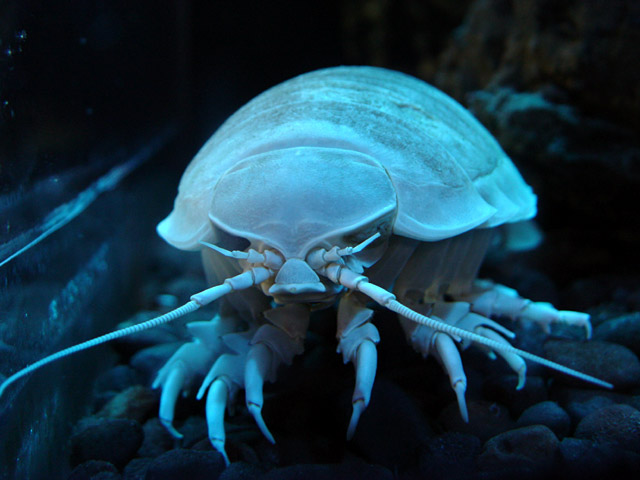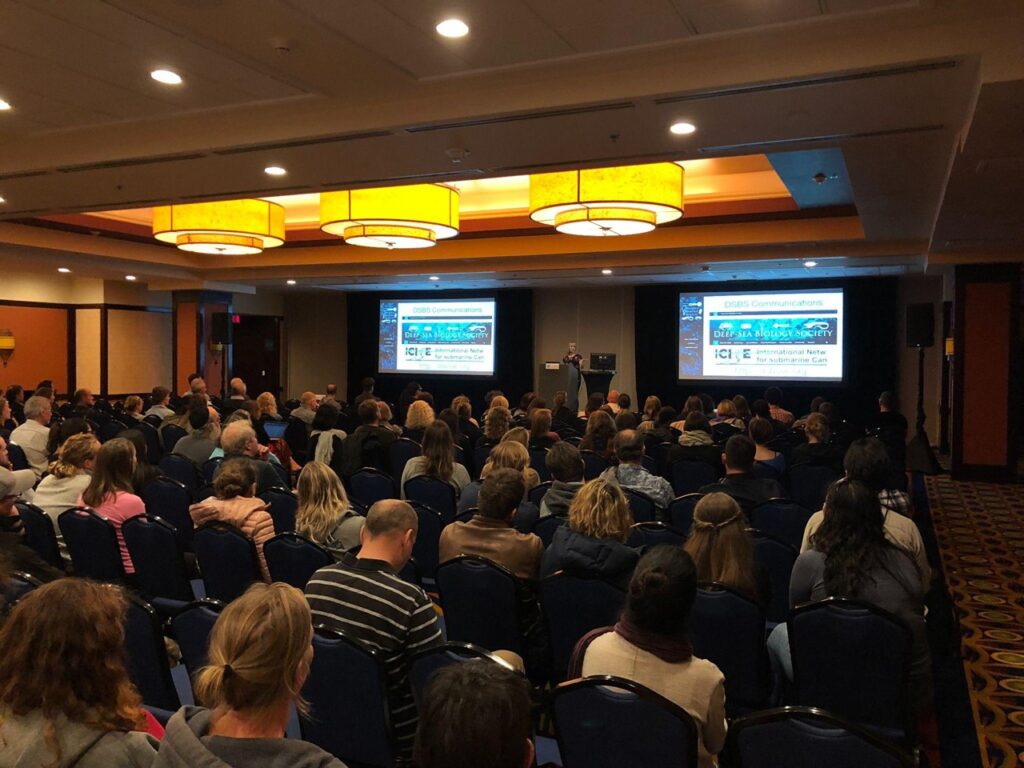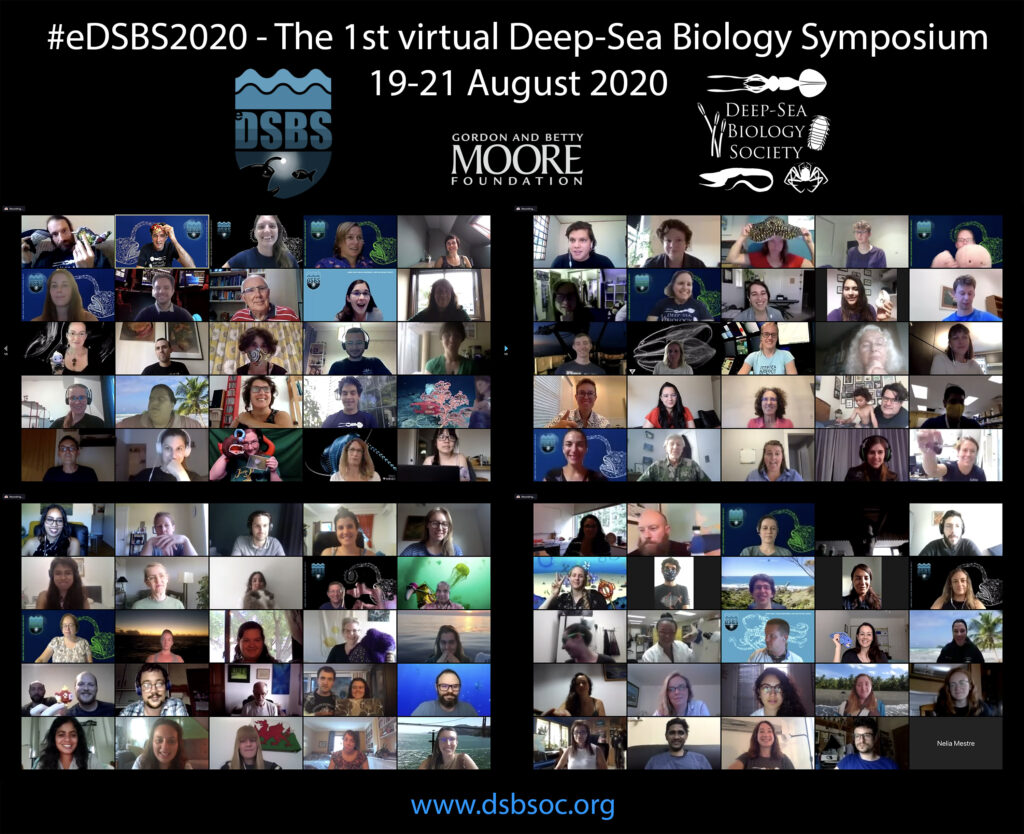
Mission
The Deep-Sea Biology Society (DSBS) was organised by scientists who recognised a need for an organisation to meet the requirements of deep-sea biologists. The mission statement of the DSBS is as follows:
The advancement of education for the public benefit in deep-sea biology by the operation of a scientific society to promote the exchange of information, the promotion and dissemination of deep-sea research, to foster the next generation of deep-sea biologists and to promote demographic diversity in the study of deep-sea biology.
The Deep-Sea Biology Society is a UK-registered charity (No 1173699) since July 2017.
Constitution and Code of Conduct
The DSBS Constitution and Bylaws are accessible here – this document is current as of August 2020.
The Society’s Code of Ethics and Professional Conduct is available here – this document is current as of August 2020.
Annual General Meetings
Minutes from our Annual General Meetings (AGM) can be found below:
DSBS AGM 2021_Minutes and Presentation
DSBS AGM 2020_Minutes and Presentation
History of the Society
Compiled by Adrian Glover (President, 2016-2021) and Erin Easton (Secretary 2018-2021).
The Deep-Sea Biology Society was born out of the long-running Deep-Sea Biology Symposia (DSBS), which is said to have commenced in 1977 with two meetings in Sweden, held in Kristineberg on the west coast and Stockholm on the east coast. A deep-sea biology meeting held in 1981 in La Jolla, USA followed but like previous meetings was not given a number. The first DSBS given a number was in Hamburg, Germany in 1985, which became the 4th DSBS. Since 1985, theDSBS have been held roughly every 3 years, and at the time of writing this, the 16th DSBS is about to be held in Brest, France in 2021.
There is some debate amongst those that remember, or those that remember those that remember, on exactly which meeting was the first ‘DSBS’. Some have said that the two meetings held in 1977 were effectively the same meeting, making the Hamburg meeting the 3rd DSBS. Torben Wolff, one of the pioneers of Deep-Sea Biology from the 1950s onwards, claimed apparently that a meeting held in 1953 was the first. Others (possibly Bob Hessler) that the first real ‘DSBS’ was the meeting in La Jolla, hosted by Scripps in 1981. A number of sporadic meetings held from the 1950s – 1970s certainly discussed the emerging field of deep-sea biology, but as the Hamburg meeting was actually labelled the ‘4th’ meeting, the numbering system has stuck.
The late 1970s were a remarkable, pivotal period in our field and perhaps all of the biological sciences with the discovery of abundant, chemosynthesis-fuelled life at deep-sea hydrothermal vents. This discovery changed deep-sea biology completely, launched a large number of careers, and opened up major opportunities for funding. At the same time, with the growing ratification of UNCLOS (United Nations Convention on the Law of the Sea), Exclusive Economic Zones (EEZs) were being declared around the world and necessitated many countries expanding exploration and scientific research offshore and into deeper waters. Deep-sea biologists were also starting to collaborate and communicate much more internationally, and a newsletter, called the Deep-Sea Newsletter, was produced to link the “deep-sea community”. Issues were produced from 1978 through to 2005 (you can access them here) and all of them except the last one was edited by Torben Wolff. You can hear his own words here, in an interview conducted in 2015 by the Natural History Museum of Denmark. Torben, one of the scientific crew on the pioneering Danish Galathea II expedition in the early 1950s, passed away in 2017, at the age of 97.

From 1985 through to 2012, DSBS meetings were held in either the USA or western Europe. It was not until 2012 that the meeting was held for the first time in the Asia-Pacific region, hosted by New Zealand. There has been a steady growth in the number of registered participants at the symposia, reflecting the growth of deep-sea biological sciences and the increasing number of nations involved.

At the closing events of the 13th DSBS in December 2012, the idea was presented by Dr Craig McClain and Prof Bhavani Narayanaswamy of forming an official Society to help ensure the Symposia continued and to promote demographic diversity in the deep-sea biology community. Specifically, it was proposed at the meeting and in an email to the community on 12 December 2012 that a Society would be useful to:
- Promote greater demographic diversity
- Ensure that the conference is held regularly
- Support the conference organisers
- Support PhD students/scientists from developing nations
- Be an “official” voice to advocate for our community
- Continue to build public awareness
In early 2013, an initial steering committee was formed, and by June 2013 a draft constitution was sent to the community for comment and then in September 2013 a final vote was taken, requiring a ⅔ majority of the number of persons registered at the 2009 Deep-Sea Biology Symposium to be approved. By December 2013, positions on the Board were filled and the Society came into existence in a formal sense, with the first President being Prof Paul Tyler of the University of Southampton.
From 2013 to 2016 there were many developments in the formation of the Society. The Board Members saw a future in which the Society could provide funding to support workshops and to provide enriching experiences for early-career researchers (e.g., through research lab visits and workshop participation). This group of deep-sea biologists dedicated considerable time over the next three years to form the Society. They wrote the first Constitution, designed the Society logo, opened a Society bank account, and set up a Society website. They wrote grant proposals to fund the creation and initial efforts of the Society and secured funding from the Richard Lounsbery Foundation to do so. With these funds, they were able to offer awards for those enriching experiences (i.e., Dive Deeper and Lounsbery Workshop awards), to support travel for membership to symposia, to provide some financial support to symposium organizers, to develop a mentoring network, and to develop the website, among other activities. By the 14th DSBS in Aveiro, Portugal in 2015, the Society was no longer just a vision, it was a reality, with the first opening address by the then Society President Dr Craig McClain given to the conference attendees.
Following the 14th DSBS in Aveiro, the elected board continued to move the Society forward. They continued to rely primarily on the Lounsbery funds to support Society members and activities but were slowly but steadily increasing membership to help fund operational costs. Several new board members were elected and several moved positions, with Dr Adrian Glover becoming President in August 2016, sending out in December 2016 what would become the first of a biennial President’s Letter series, each timed to coincide with the publication of the newsletter Deep-Sea Life (jointly produced by INDEEP and the Deep-Sea Biology Society).Many behind-the-scenes’ activities took place including developing partnerships with Symposia local organizing committees to receive donations and to integrate Society membership and symposia registration. Additional awards (Landmark paper, Paper of the Year, Best PhD paper, etc.) were added, more travel and presentation awards were offered for symposia,, our internal infrastructure was expanded (e.g., Excel-based membership management was upgraded to a licensed membership platform – Wild Apricots software), a Data Management Policy was implemented to meet the UK General Data Protection Regulation, a Public Forum for Society and membership communications was setup in Slack (http://j.mp/dsbs_slack), and a mentoring pilot program was implemented.
One of the most critical tasks in the period of 2016-17 was becoming a proper legal entity that could handle financial transactions and be compliant with tax law. To do so required choosing a nation state to apply for non-profit legal status, and with the President and the Treasurer at the time both resident in the United Kingdom, it was natural to apply to the UK Charities Commission, although we have always (and will always) maintain that the Society is an international organisation with no special regional focus. However, somewhere had to be chosen and the UK was the choice for logistical reasons. On 6 July 2017, the Society finally became a legal non-profit charitable entity which meant that it was no longer an informal organisation, but a body that could apply for grants, receive gifts, own property and employ people. This change also introduced some new language into our communications including the Board Members becoming (in legal terms) ‘Trustees’ of the Society, an updated Constitution that met UK Charitable Organization Guidelines, a new mission statement and most importantly a legal requirement to hold an Annual General Meeting (AGM) for all members of the Society who could vote approve the financial accounting of the Society by vote and also vote and comment on other matters such as the election of new Trustees. The first AGM of the Society was held on 30 August 2017 in Woods Hole, USA, coinciding with the 6th International Symposium on Chemosynthesis-Based Ecosystems (CBE). It was rather an informal affair, but members were able to view the finances and discuss future plans for the Society. As the Society has grown (in 2021 to almost 700 members) it has become necessary to formalise the AGM with voting on key issues, proper financial accountability and reports from the Trustees. With the shift to the CBE meeting to a 3-year cycle to match DSBS, we can also now hold the AGM every year (a legal requirement) coinciding with either the CBE meeting, the main DSBS or the International Symposium on Deep-Sea Corals (ISDSC).

By the 15th DSBS in Monterey, USA, we were able to expand our popular travel award offerings from just a handful (2-4) to 13 awards using Society or sponsor funds, and our membership increased from ~150 to ~400 by integrating membership with Symposia registration. The Society proposed constitutional changes (e.g., adding a Development Trustee and an Early-Career Trustee) to meet the needs of the Society and its membership and also implemented a formal method of nomination for being the host of future DSBS and implemented a method of developing a partnership with the host organization, i.e., the Society and host organization sign a Memorandum of Understanding (MoU) that clarifies financial responsibilities and expectations (e.g., donating surplus to the Society) and provides guidelines for space, acceptance rates, diversity initiatives, among other expectations. Although the Society did not have a formal partnership (MoU) with the 15th DSBS organizers, the Monterey Bay Aquarium Research Institute generously donated 100% of the conference surplus income to the Society so that it could be reinvested to support our activities such as providing future travel awards.

Between 2018 and 2021, the Trustees continued to move the Society forward. New executive roles were created (Diversity officer), a Code of Professional Conduct and Ethics created, and for the first time the Society took on a legal and financial role as a conference organiser, supporting the 7th International Symposium on Deep-Sea Corals, held in Cartagena in 2019, where a then-record 20 travel grants were awarded. This support was the first test of a system whereby the large legal and financial risks associated with hosting a symposium could be handled by the Society, making it possible to hold future meetings in a more diverse range of locations. New awards were created such as the Cruise Bursary, several webinars were held aimed at students and early-career researchers, the mentoring scheme was expanded even further, our social media presence reached new highs (>6k followers on Twitter), a variety of articles (mainly content from the co-produced Deep-Sea Life) and student / early-career profiles were featured on the Society website and a variety of ‘under the hood’ improvements took place in our management including a new email system for the Trustees linked to repository for permanent storage of Society-related documents, and expansion of our packages for managing membership (Wild Apricots software), communications (Slack), and online meetings (Zoom).
In April 2020 the Society took the decision to organise a one-off virtual symposium ‘eDSBS’ aimed at early-career researchers who were unable to present at meetings owing to the Covid19 pandemic. This meeting was one of the first of the new kind of large symposia held on online systems, and was a great success with a remarkable 357 participants. We also held our AGM virtually at eDSBS for the first time, as the CBE meeting (where it would normally be held) was postponed owing to the pandemic.

In 2021, we initiated further actions to try and improve diversity in our community, publishing our diversity action plan and developing a diversity fund and a membership waiver program for those in financial need. To support our researchers in most need of funding, we raised 25,000 USD of sponsorship to cover online registration fees for anyone that required them at the 16th DSBS in Brest, France, the first DSBS to be offered in a hybrid online/in-person format. The Society has now provided over 150 awards to participants at that meeting for both online and in-person attendance.
Website Image Credits
All images on the DSBS website represent Creative Commons-licensed content from Wikipedia or Flickr, or images where permission to use has been granted by the owner.
